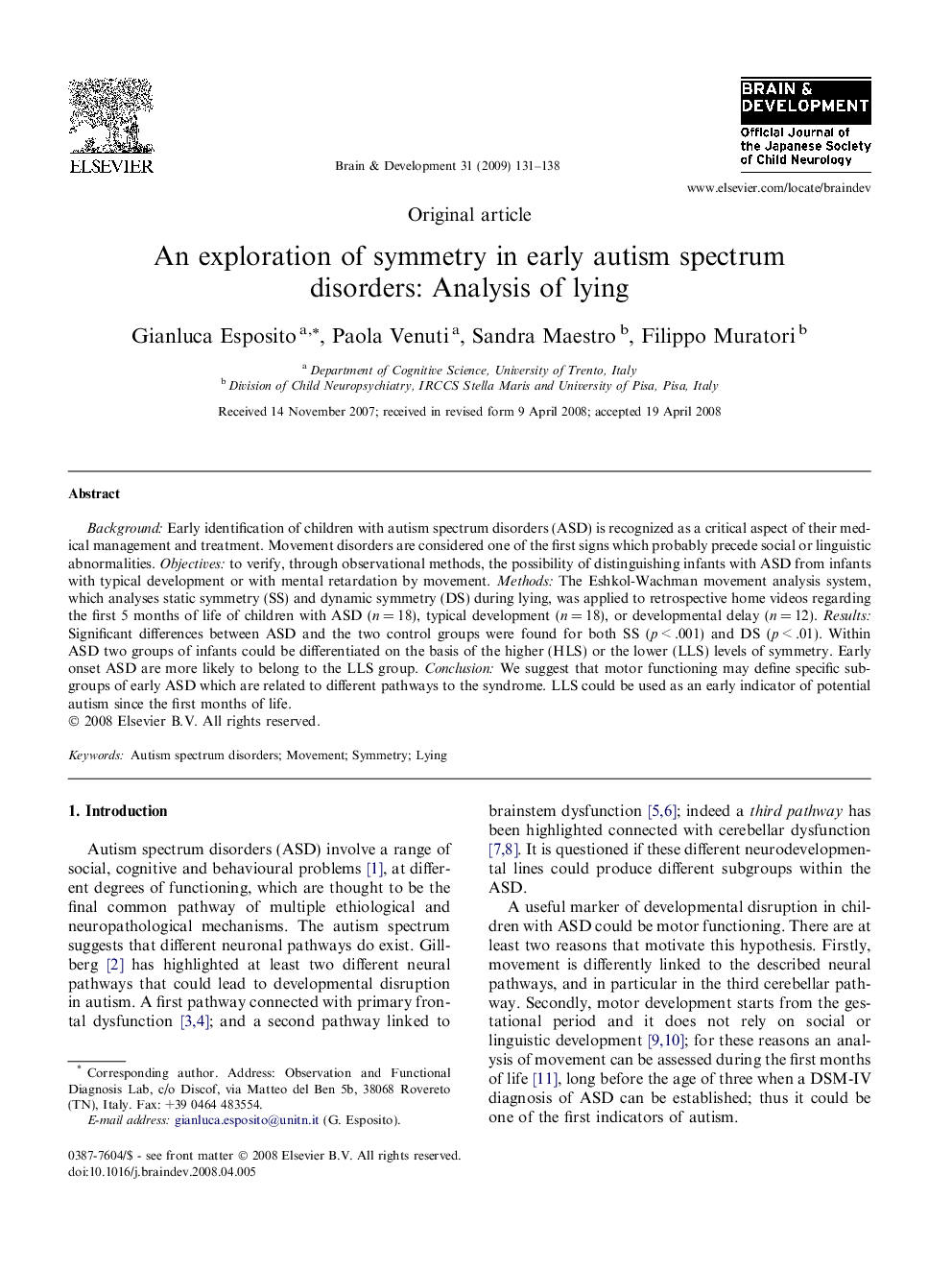| کد مقاله | کد نشریه | سال انتشار | مقاله انگلیسی | نسخه تمام متن |
|---|---|---|---|---|
| 3038212 | 1184453 | 2009 | 8 صفحه PDF | دانلود رایگان |

Background: Early identification of children with autism spectrum disorders (ASD) is recognized as a critical aspect of their medical management and treatment. Movement disorders are considered one of the first signs which probably precede social or linguistic abnormalities. Objectives: to verify, through observational methods, the possibility of distinguishing infants with ASD from infants with typical development or with mental retardation by movement. Methods: The Eshkol-Wachman movement analysis system, which analyses static symmetry (SS) and dynamic symmetry (DS) during lying, was applied to retrospective home videos regarding the first 5 months of life of children with ASD (n = 18), typical development (n = 18), or developmental delay (n = 12). Results: Significant differences between ASD and the two control groups were found for both SS (p < .001) and DS (p < .01). Within ASD two groups of infants could be differentiated on the basis of the higher (HLS) or the lower (LLS) levels of symmetry. Early onset ASD are more likely to belong to the LLS group. Conclusion: We suggest that motor functioning may define specific subgroups of early ASD which are related to different pathways to the syndrome. LLS could be used as an early indicator of potential autism since the first months of life.
Journal: Brain and Development - Volume 31, Issue 2, February 2009, Pages 131–138